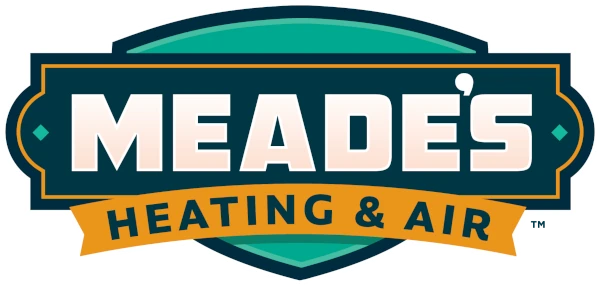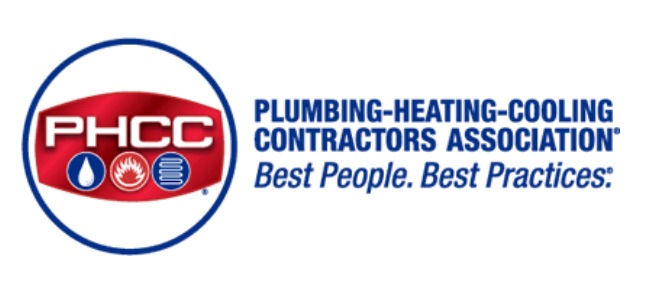“Is it chilly in here, or is it just me?” If that’s the question that brought you to this post, we’d like to say this first: That stinks. No one needs a quitter furnace in the dead of winter, and we’re so sorry it’s happened to you. And now for the good news: Many furnace issues can be resolved simply, quickly, and inexpensively. In this post, we cover 12 of the most common problems, how to fix them, and when you’ll need some professional help with your Ashburn furnace repair.
We know you’re cold, so we’ll dive right in.
Furnace Problem #1: The Thermostat Isn’t Set to Heat
We don’t mean to be the HVAC equivalent of the stereotypical IT “help” desk, but we have to at least ask: Is your thermostat actually on—and on the right setting? Even if you’re certain it is, go check. It’s possible someone accidentally switched it off or made an overly aggressive temperature adjustment. It’s also possible that your thermostat batteries died. We’ll keep our fingers crossed for you while you check.
Furnace Problem #2: Furnace Isn’t Receiving Power
OK, well… since you’re still reading, it appears we didn’t cross our fingers card enough. (So sorry.) If your thermostat is operating and its settings are correct, the next “Boy, do I feel dumb” thing to check is this: Is the furnace plugged in? We know it seems ridiculous to think it somehow got unplugged, but it’s absolutely worth a look before exploring other possibilities.
If your furnace is plugged in, check to see if the circuit breaker tripped.
- If the breaker controlling the furnace is in the OFF position, flip it back to on.
- If it’s between ON and OFF, flip to OFF before switching it to on.
- If it stays in the ON position, assume the tripped breaker was a fluke, and breathe a sigh of relief.
- If the breaker trips again, you may have a problem with the wiring or with the breaker itself. In either case, you should involve a licensed electrician.
Furnace Problem #3: Furnace is Making a Grinding or Scraping Sound
If your blower is producing a grinding or scraping noise, it means your ball bearings have worn out and you should turn off the unit immediately. For this fix, you’ll need some help from a qualified Ashburn HVAC professional.
Furnace Problem #4: Furnace is Making a Squealing Noise
Shrieking furnaces indicate a slipped or worn blower belt. If you’re reasonably mechanically inclined, you can likely tackle this repair on your own.
- If you can’t see any damage to the belt, try tightening it. (Just don’t overdo it, or you’ll end up with Problem #3.)
- If you can see wear and tear on the belt, pick up a new one from your home improvement store, and follow the replacement instructions in your owner’s manual.
- Or… save yourself some significant time and hassle, and let us help you instead.
Furnace Problem #5: Pilot Light or Ignition Issues
If you have an older furnace with a pilot light that won’t stay lit, you’ll need a professional to help you investigate several possible causes. You could have a misbehaving thermocouple or a clogged pilot orifice, your flame setting may be too low, or you might have a defective safety switch (which is obviously a big deal).
Note: Before attempting to relight your pilot, turn off the gas supply and wait several minutes. Natural gas is highly flammable, and if your pilot light has been out for some time, there could be a dangerous amount of gas built up around the unit. Always follow the instructions in your owner’s manual.
For furnaces with an electric ignitor, it’s worth checking the condition of your flame sensor. This critical safety feature of your furnace shuts down the whole works when it detects gas but no flames. When these sensors get dirty, they can’t “see” the flames, and so they unnecessarily shut everything down. To clean yours:
- Turn off power to your furnace at the unit itself or by flipping the circuit breaker (not just at the thermostat).
- Close the gas supply valve.
- Using a ¼” hex-head screwdriver, carefully remove the flame sensor—it’s a thin, metal rod located at the burner assembly.
- Gently rub the sensor with fine-grit sandpaper or an emery board. (A dollar bill actually works great, too!)
- Wipe away any remaining dust with a paper towel, and then replace the sensor.
Furnace Problem #6: Dirty Filters
We cannot over-exaggerate the importance of regularly replacing your furnace filters. Clogged filters restrict airflow, which makes your furnace work harder, which can lead to the heat exchanger overheating, which will shut down your unit.
At best, you’ll have an inefficient furnace producing less heat for more money. At worst, you’ll shorten the lifespan of your furnace and have a chilly house. If your furnace isn’t producing enough heat, or if it’s constantly cycling off and on, there’s a good chance the poor thing is gasping for air. Replace those filters!
Furnace Problem #7: Access Panel Left Open
As you’ve no doubt discovered, accessing the guts of your furnace requires opening a panel on the unit. If the panel isn’t closed all the way, the furnace will absolutely not turn on… yet another safety feature to prevent injuries!
Furnace Problem #8: Dirty Burners
If your burners get gunked up, they can’t release sufficient natural gas to create combustion—which means you’ll get no heat. Healthy burners produce blue flames; any other color, such as yellow or orange, indicates debris in the mix. Dirty burners can also produce an impressive boom-rumble when they try to ignite. Although Googling “how to clean dirty burners” will yield several results, we strongly advise against doing this yourself. Too many things can go wrong—and quickly.
Furnace Problem #9: Cracked Heat Exchanger
A cracked heat exchanger hampers your furnace’s ability to do its job and it can allow deadly carbon monoxide to seep into your home. The signs of a cracked heat exchanger can be tricky to spot, but they may include:
- Soot on the inside of your furnace
- A strong, unpleasant odor that may remind you of that frog dissection unit in 10th-grade biology
- Water on the floor around the furnace
- People in your home experiencing headaches, irritated eyes, nausea, disorientation, or flu-like symptoms—all indications of carbon monoxide poisoning
If you even suspect your furnace has a cracked heat exchanger, shut it down and call in an Ashburn HVAC expert immediately.
Furnace Problem #10: Faulty Limit Control Switch
If your blower fan runs continuously, and you’re certain your thermostat is set to AUTO not ON, your limit control switch may be to blame. This switch, located just under the box that directs heat from the furnace to the ducts, shuts down the system when the air gets too hot. If the unit never shuts off, it means your limit switch needs to be adjusted or replaced—which is a job for an HVAC pro.
Furnace Problem #11: Furnace Doesn’t Blow Air
If your furnace is coming on but it doesn’t seem to be moving air, you probably have a broken blower fan belt. As we advised in Problem #4, follow the instructions in your owner’s manual to replace the belt (or let us do it for you).
Furnace Problem #12: Popping or Pinging Ducts
As ducts heat, they expand, and when they cool, they shrink back—which can explain most of the popping or pinging sounds you hear. You may also have a loose flap of metal inside a duct that wiggles as air moves past it. If you can trace the sound to its exact location, try making a small dent in that location to see if that stops the sound. (Hooray for physics!)
Could Your Furnace Use a Tune-Up?
To ensure your furnace will keep your home comfortable all season long—and for many years to come— have us over to do a thorough inspection. With MasterTech Plumbing, Heating and Cooling, Ashburn’s most trusted HVAC experts, you can have peace of mind that we’ll take good care of you and your home. But you don’t have to take our word for it; check out our reviews!



